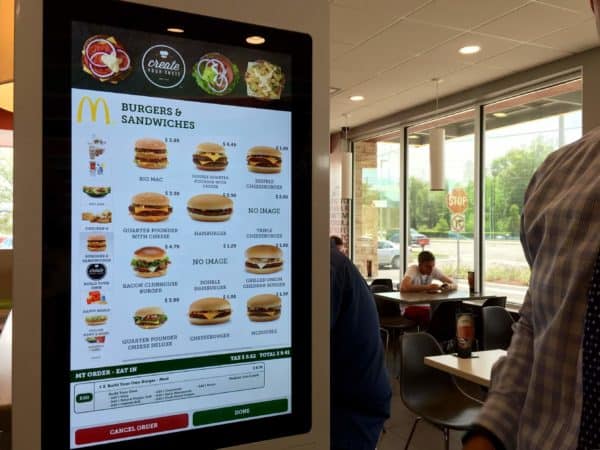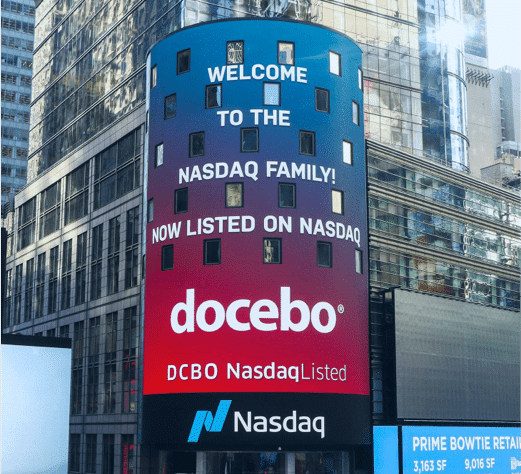
 The trend towards automation on the customer side of the fast food industry appears to be hitting an inflection point. This morning, McDonald’s Canada grabbed headlines when it said it would offer table service at some restaurants, a move that seems to imply a return to a folksy, rural experience.
The trend towards automation on the customer side of the fast food industry appears to be hitting an inflection point. This morning, McDonald’s Canada grabbed headlines when it said it would offer table service at some restaurants, a move that seems to imply a return to a folksy, rural experience.
But the reality is that the modern fast food dining experience will look more like Tokyo than Tillsonburg. Enter the McDonald’s kiosk.
“We’re basically blowing up the front counter,” said McDonald’s Canada CEO John Betts, who unveiled plans that will see the world’s largest fast food chain introduce self serve kiosks at its restaurants. The fast food kiosk is intended to speed the entire order process and will allow customers to customize their meal, a move McDonald’s no doubt hopes will increase its average order price.
One McDonald’s owner in Edmonton recently said that the kiosks would require an extra 10 to fifteen staff for each restaurant. McDonald’s says the moves will create 15,000 new jobs across the country.
The trend towards automation has not necessarily proved to be one of job creation. A study from University of Oxford estimated that there is a 92% chance that fast-food service and preparation would soon be automated and predicted that about 47% of total U.S. employment would be at risk. One expert, however, thinks the expansion or reduction of actual humans working in fast food will be a non-story. Darren Tristano, who studies the food industry for research firm Technomic, predicts a 10% drop in labour at worst.
In July, Domino’s Pizza, which has more than five thousand stores across the United States credited a move towards digital ordering for a strong strong second quarter earnings, noting that more than half of its orders now come through its web site, text messages, or even tweets.
“If you look at the thousands of years that consumers have been served alcohol and food by people, it’s hard to imagine that things will change that quickly,” said Tristano.
While the number of jobs lost or gained through automation is uncertain, what workers will be doing in restaurants will shift and how customers interact with them will soon change forever, if it hasn’t already.
In 2013, fast food chains Chili’s and Applebees installed hundreds of thousands of tableside tablets that allows customers to order and pay their bill without ever talking to a waiter. Those firms were soon followed by Buffalo Wild Wings, Panera Bread, Olive Garden and dozens others. Darden Restaurants, which owns popular chains such as Olive Garden, Red Lobster, LongHorn Steakhouse and Bahama Breeze Grille, recently said it would introduce tablets at all its U.S. restaurants by the end of this year.
For decades in Japan, establishments have customers order at a vending machine or kiosk before sitting down to eat. Today in North America, the digital equivalent is driving sales for some firms. In July, Domino’s Pizza, which has more than five thousand stores across the United States, credited a move towards digital ordering for a strong strong second quarter earnings, noting that more than half of its orders now come through its web site, text messages, or even tweets.
We’ve seen a shift in thinking of retailers. They want to let customers pay the way they want, anytime, anywhere. This is good for the experience for customers and good for the revenue for retailers. Apple started this shift and we see other companies following suit.
One expert says the idea of bellying up to a centrally located counter will soon seem as antiquated as renting a movie from BlockBuster.
“I fully believe that it will seem crazy, even just two or three years from now, that we used to wait in long lines until we got our turn, and then told [a cashier] what we wanted, and had them punch it into a machine for us,” said Noah Glass, who is the founder and CEO of Olo, which makes mobile ordering technology for firms such as Chipotle, Cold Stone Creamery and Five Guys.
Michael Gokturk, who is the founder of Vancouver-based mobile payments processing firm Payfirma, says there is a sea-change going on the in the retail space in general that was first experienced by many in Apple Stores, which abandoned a dedicated checkout counter and instead armed each employee with an EasyPay system.
“We’ve seen a shift in thinking of retailers,” he says. “They want to let customers pay the way they want, anytime, anywhere. This is good for the experience for customers and good for the revenue for retailers. Apple started this shift and we see other companies following suit.”
Comment
Leave a Reply
You must be logged in to post a comment.



 Share
Share Tweet
Tweet Share
Share




Using such board and eating my burger and fries, can I catch someone else disease? Or those from the last 25 users?
faster mccrap. oh yay.